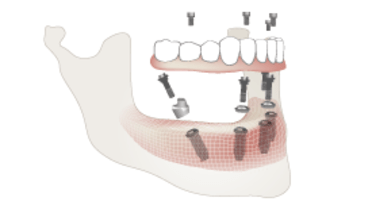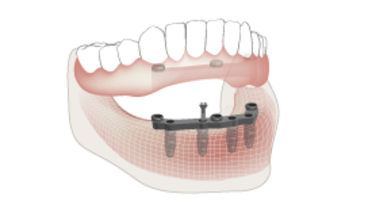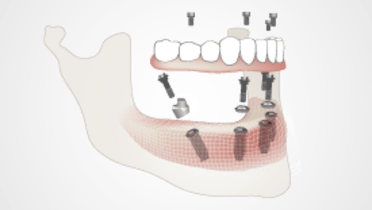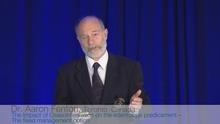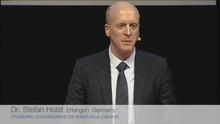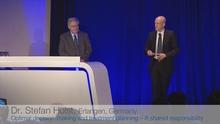-
0
Patient Assessment
- 0.1 Patient demand
- 0.2 Overarching considerations
- 0.3 Local history
- 0.4 Anatomical location
- 0.5 General patient history
-
0.6
Risk assessment & special high risk categories
- 5.1 Risk assessment & special high risk categories
- 5.2 age
- 5.3 Compliance
- 5.4 Smoking
- 5.5 Drug abuse
- 5.6 Recreational drugs and alcohol abuse
- 5.7 Parafunctions
- 5.8 Diabetes
- 5.9 Osteoporosis
- 5.10 Coagulation disorders and anticoagulant therapy
- 5.11 Steroids
- 5.12 Bisphosphonates
- 5.13 BRONJ / ARONJ
- 5.14 Radiotherapy
- 5.15 Risk factors
-
1
Diagnostics
-
1.1
Clinical Assessment
- 0.1 Lip line
- 0.2 Mouth opening
- 0.3 Vertical dimension
- 0.4 Maxillo-mandibular relationship
- 0.5 TMD
- 0.6 Existing prosthesis
- 0.7 Muco-gingival junction
- 0.8 Hyposalivation and Xerostomia
- 1.2 Clinical findings
-
1.3
Clinical diagnostic assessments
- 2.1 Microbiology
- 2.2 Salivary output
-
1.4
Diagnostic imaging
- 3.1 Imaging overview
- 3.2 Intraoral radiographs
- 3.3 Panoramic
- 3.4 CBCT
- 3.5 CT
- 1.5 Diagnostic prosthodontic guides
-
1.1
Clinical Assessment
-
2
Treatment Options
- 2.1 Mucosally-supported
-
2.2
Implant-retained/supported, general
- 1.1 Prosthodontic options overview
- 1.2 Number of implants maxilla and mandible
- 1.3 Time to function
- 1.4 Submerged or non-submerged
- 1.5 Soft tissue management
- 1.6 Hard tissue management, mandible
- 1.7 Hard tissue management, maxilla
- 1.8 Need for grafting
- 1.9 Healed vs fresh extraction socket
- 1.10 Digital treatment planning protocols
- 2.3 Implant prosthetics - removable
-
2.4
Implant prosthetics - fixed
- 2.5 Comprehensive treatment concepts
-
3
Treatment Procedures
-
3.1
Surgical
-
3.2
Removable prosthetics
-
3.3
Fixed prosthetics
-
3.1
Surgical
- 4 Aftercare
Fixed Implant Prosthesis Clinical Protocol
Key points
- The oral rehabilitation of edentulous patients is comprised of specific clinical techniques
- Clinical objectives are best met by following a routine protocol
- The protocol for a provisional or a fixed prosthesis is based on similar concepts
- Sufficient space should be provided for easy access for oral hygiene
- Multi-unit abutments are placed onto the implants to raise the prosthetic platform above the soft tissue
Design criteria
A fixed implant prosthesis is completely anchored and supported by dental implants. There are different terms used to describe a fixed implant prosthesis, such as fixed complete denture, fixed detachable prosthesis, the hybrid prosthesis, or the All-on-4 prosthesis.
Usually 4 to 6 implants are required to provide sufficient biomechanical support for this type of prosthesis. The final determination of the number of implants utilized to retain and support a fixed complete denture is based on consideration of the biomechanical factors that are usually specific to each patient. These include, the arch being restored, the form of the arch, the quantity and quality of the bone, the status of the opposing arch (dentate versus edentulous), forces generated by the patient and anatomical limitations.
Frequently, due to the presence of limiting anatomical structures, the posterior implants on each side are tilted to gain more distance with the anterior implants creating a more favorable anterior-posterior spread (AP-spread). AP spread is a calculation of the greatest amount of cantilever allowed for a dental implant within its bilateral distal ranges. It is measured by determining the distance from the center of the most posterior to the center of the most anterior implants and multiplying by 1.5 (Mosby's Dental Dictionary, 2nd edition. © 2008 Elsevier, Inc.)
Fabrication protocol
Fabrication of a fixed prosthesis involves making preliminary and definitive impressions. The definitive impressions are made after border molding a custom tray. Border molding helps achieve appropriate extensions for the complete denture and is accomplished with either an elastomeric material such as polyvinyl siloxane or with green modeling plastic impression compound. The definitive impressions are then made with an elastomeric impression material such as polyvinyl siloxane and use of implant transfer copings. Occlusion rims for the maxillary and mandibular edentulous arches are fabricated and then adjusted to achieve appropriate lip support, vertical dimension and phonetics. Jaw relation records are captured utilizing the occlusion rims and the casts mounted on an articulator. Denture teeth are then selected and arranged. A wax trial placement is then carried out to confirm acceptable esthetics, vertical dimension and phonetics.
Provisional or definitive
A fixed implant prosthesis may be provisional or definitive. The clinical protocol for a definitive fixed implant prosthesis is essentially the same as for the provisional fixed implant prosthesis with the exception of a key additional step. The extra step is the trial placement of the framework. Here, the metal or ceramic framework that has been fabricated must be trial placed and passive fit and space for tooth arrangment and veneering material carefully evaluated. A wax trial placement can be carried out after confirming framework fit.
Provisional fixed implant prosthesis - Treatment Steps
1. Making preliminary and definitive impressions
2. Recording occlusal vertical dimension and jaw relationship
3. Trial placement of wax pattern
4. Placement of the prosthesis
5. Postplacement evaluation
Definitive fixed implant prosthesis - Treatment Steps
1. Making preliminary and definitive impressions
2. Recording occlusal vertical dimension and jaw relationship
3. Trial placement of wax pattern
4. Trial placement of framework and final wax trial placement with framework
5. Placement of the prosthesis
6. Postplacement evaluation

